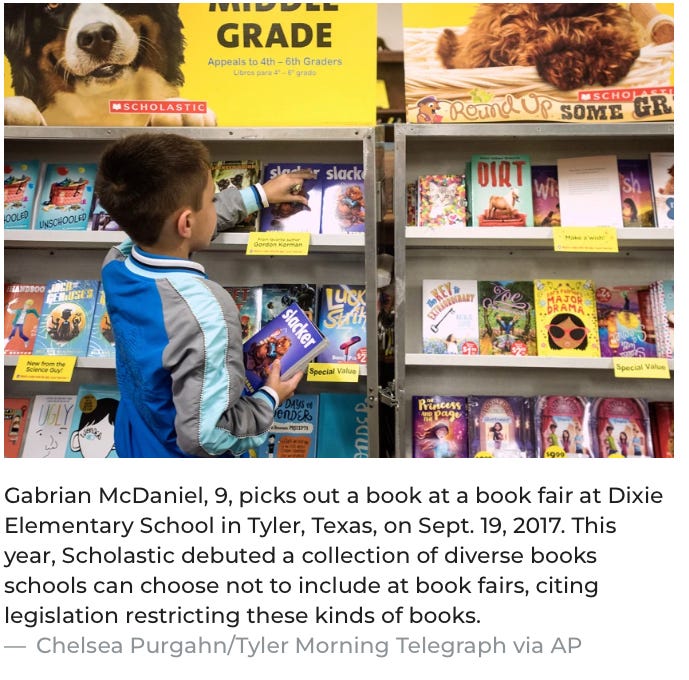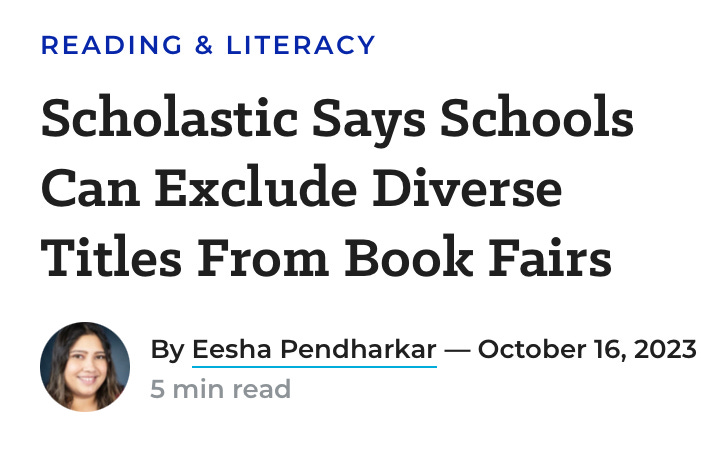“What I want to eventually do is come up with the range of ways we’ve told the story of slavery from one extreme, which is essentially a horror narrative, to the other extreme, which was powerful in pop culture in the 20th century: that all slaves were content, loyal and that slavery was an ordered society between masters and slaves,” Blight said. (Young May Cha, 11/13/2001, quoting David Blight in an article in the ‘Amherst Student’)
Storying and ReStorying are becoming easier to distinguish these days. I appreciated Dr. Fauci’s rock solid refusal to restory when popular perceptions of medical science at the moment distorted reality during the COVID pandemic. "For a while, life is not going to be how it used to be in the United States," Fauci warned us on March 15, 2020. "We have to just accept that if we want to do what's best for the American public.” He knew the documented story of pandemics from long and hard experience, including his work on AIDS. Fauci refused with quiet dignity and powerful patience to acknowledge the restoried version the anti-vaxxers wanted to hear.
A close relative of mine, who was a young teen during the fiasco with the inactivated polio vaccine (IPV) in the 1950s, explained to me the fear, mistrust, and anger people felt when children who had been vaccinated came down with polio. The polio virus was killed by heat, chemicals, or radiation during vaccine production, but a killed virus could nonetheless spark an immune response. My relative had worked as a medical professional herself, she said, and understood the science, but she also understood why people resisted. “All these people know is what they saw and heard and remember. It was horrible with stories everywhere of hundreds of kids getting polio from the vaccine,” she said—the restory, she meant. The story of the polio vaccine, as Dr. Fauci knew in the background when he urged us “to just accept the fact” that life was about to change, was a different story, far more nuanced, in some ways in its underbelly far more horrible than my relative even knew.
*
In April 1955, Cutter Laboratories in Berkeley began mass-producing the IPV to meet growing demand for vaccinations. Some of the vaccine doses Cutter produced inadvertently contained active poliovirus. Estimates were that 40,000 children received the active virus when the vaccine was rolled out, causing even worse spread of the disease, and 200 children contracted polio. Here is what had happened.
In 1954, the National Institutes of Health delegated Bernice Eddy to perform safety tests for a batch of supposedly inactivated polio vaccines developed by Jonas Salk for Cutter Laboratories. Eddy's job was to test the inactivated vaccines from five different companies before they could be released. She discovered that Cutter Laboratories' vaccine contained residual live poliovirus, resulting in paralyzed monkeys in three of the six batches she experimented with, indicating someone seriously wrong in the process at Cutter Laboratories.
Eddy reported her findings to the head of the Laboratory of Biologics Control, William Workman, including photos of the affected monkeys, who invalidated Eddy's findings and dismissed her from the polio research. The rest is history. The immediate impact was a cessation in polio vaccines for some time. The long-term impact was a foundation for restorying the idea of a vaccine, a mythical foundation responsible for far more COVID deaths than what otherwise could have occurred.
*
In October, 2020, Fauci upset the White House by referring to the celebration held on the White House lawn for Amy Coney Barrett’s nomination to the Supreme Court as a “superspreader event,” and then a week later, Fauci was vilified for saying on Sixty Minutes that he was not surprised when Donald Trump came down with COVID after he’d seen a news-clip of Trump at another event where almost everyone was maskless. The role Anthony Fauci played was very much in the tradition of Bernice Eddy, refusing to bury paralyzed monkeys in a restory despite reprisal.
When pressed by the reporter to clarify his earlier comment about Trump’s leadership—Trump’s handling of the virus cost thousands of lives, he said—again Fauci knew the story and wasn’t inclined toward restorying it. He responded in a way that people who appreciate the story understand:
“I mean, obviously you could logically say that if you had a process that was ongoing and you started mitigation earlier, you could have saved lives. Obviously, no one is going to deny that. But what goes into those kinds of decisions is complicated."
*****
Language affords us endless opportunities to restory. If the facts are unpleasant and grizzly, if it’s too hard to find out the facts, if the facts cut against the grain of a firmly held, twice-told or a thrice-told retale, keeping just enough touch with reality to keep things plausible to the true believers, ignore the story and restory. Get your restory straight. De Santis and his anti-woke state curriculum for African-American studies in school is the latest shocking instantiation of Blight’s dueling restories of slavery in America, the Northern version and the Southern version. Brick by brick the anti-woke population is building an extreme Southern restory no longer limited geographically, sanctioning it with the brute force of law, and doing it all with nothing but words backed by the threat of jail cells. It’s my way or the highway.
Today, Judge Tanya S. Chutkan, however, displayed the same life-affirming refusal to ignore the restory that Bernice Eddy showed and Anthony Fauci has demonstrated. Sticking to the story can be tough. Because Judge Chutkan refused to buy into any of Trump’s artless restory, the former President invited his followers to come after her. She did what any reliable, honest, intelligent, knowledgeable judge would do. She took precautions and persevered:
“Because of threats to her life from Trump supporters, Judge Chutkan no longer rides the five miles by bicycle from her house to the federal courthouse in Washington. Instead she jogs with U.S. marshals on different routes, and then they drive her to work” (Robert Draper, New York Times, October 15, 2023).
Judge Chutkan also took pains to try to see ahead into the restory Trump likely planned to create about the case, and to thwart it. Knowing that Mike Pence plays two parts in the drama, that of the former Vice President who should have been hanged on January 6, 2021, according to the restory, and that of an opponent in the Presidential campaign, she issued a gag order with great finesse. Trump is now legally barred—gagged—from using his words to insight violence against the actors in the trial, including the attorneys, court employees, anyone who might be called to testify in the trial. Here is what she said about Pence according to an October 16, 2023, NYT piece:
*****
Recently, Scholastic Book publishers resolved a similarly thorny problem, stuck as it was between the rock of ages and the hard place of profit. Historically, Scholastic holds book fairs at public schools and offers a range of paperbacks children can purchase on their own. I remember the excitement these fairs created when I taught fourth grade. With the emergence of book banning legislation, however, the company was faced with a decision. What titles should it bundle into the package it offers schools to sell?
Book bans that affect not just titles children can read in class and from the school library, but also the books Scholastic can legally sell, are just another face of restorying to make the world a fantasy. “We want to make sure that children learn the truth, and that we give them the capacity to handle truths that may be uncomfortable and difficult,” says Douglass [an education professor], arguing for inclusion of diverse titles in classrooms and libraries, citing Germany as an example of a nation that has “prioritized curriculum that highlights its own injustices, such as the Holocaust.” While Germany has indeed prioritized such a curriculum, its effectiveness, according to an NPR interview from 2005, depends upon how much you know about the story.
This NPR interview featured Lars Rensmann, a German educator who taught political science at the University of Munich. Even the success of this social justice curriculum risks being misconstrued through restorying, which I want no part of:
“It is the case… that you do have quite a lot of very committed teachers who introduce students to extra-curricular activities which includes going to museums, even possibly visiting concentration camp sites, and other forms of Holocaust education. This is happening on a regular basis at German schools, but it depends on personal commitment. The history curriculum can be, and should be, improved because knowledge of the Holocaust is clearly lacking among adolescents.”
*****
A recent Education Week article focused on the issue of book bans in regard to Scholastic Book Fairs. The following photo captures the warmth and magic I remember of these fairs from the days of yore, a storyline with some hard edges like most of public schooling, which I am not inclined to restory.
Scholastic decided to offer two packages to public schools: one with a variety of LGBTQ+ books and books about marginalized people (the story), including African Americans; and one with straight white American titles that could sit comfortably on a bookshelf in Ron DeSantis’s house (the restory):
We have two stories of Book Fairs here. One is about children being denied options of books for political reasons and a book publisher’s decision to participate in the restory. The second is about state governments in the United States which have forced teachers to make decisions for children they believe to be harmful.
Note the restory told in the Scholastic press release—saving teachers from harm. This decision was tough for them, according to the restory, creating an almost but not quite impossible dilemma. Almost… What self-respecting book publisher would want to endanger teachers or librarians?
What would Fauci do?






